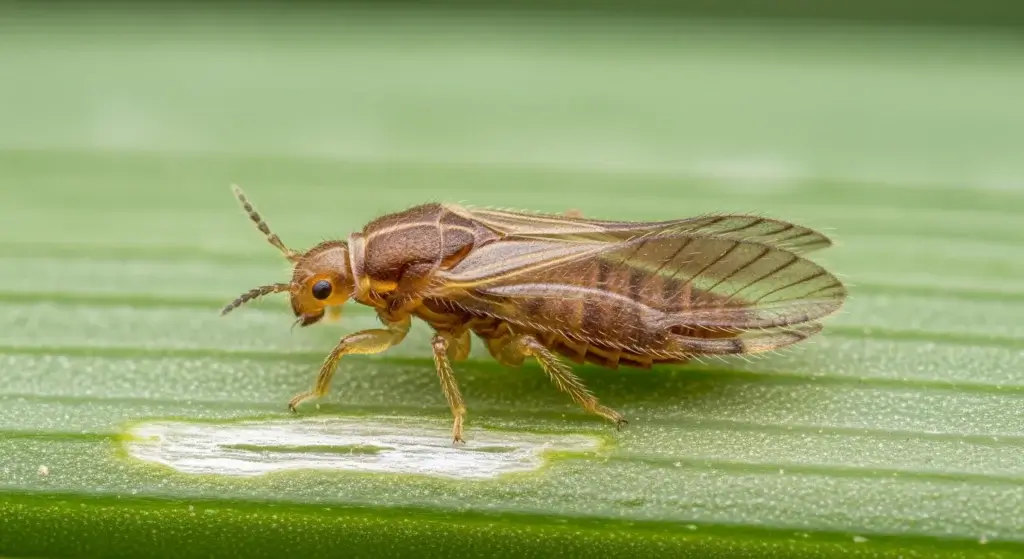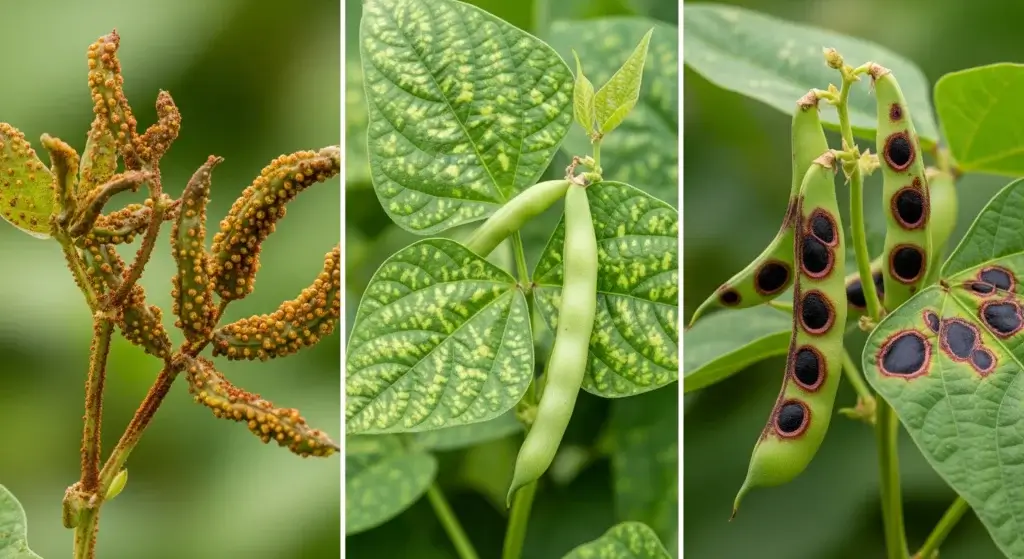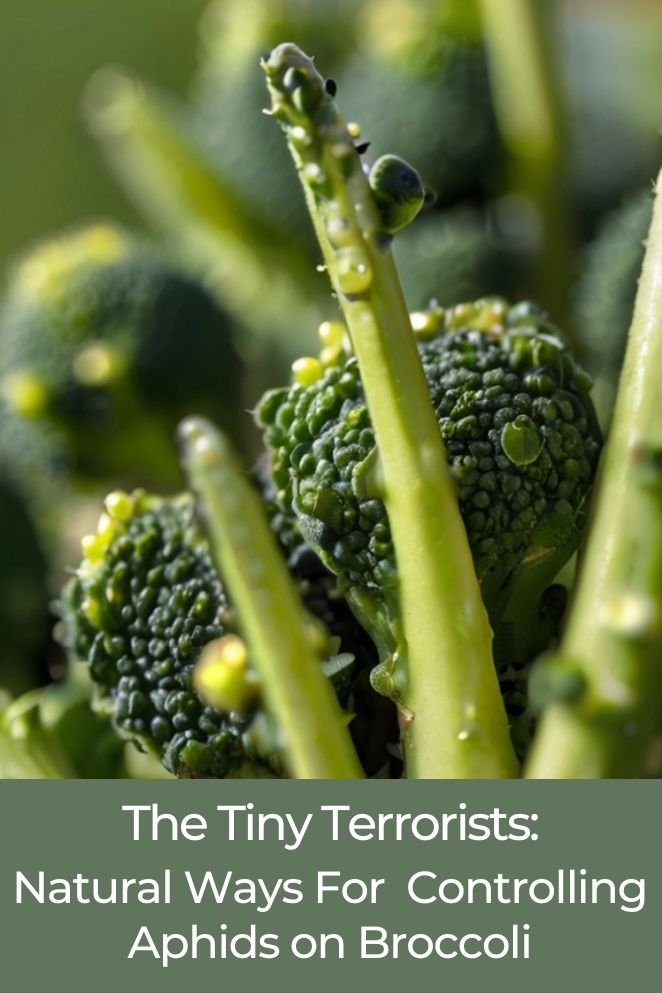
Aphids are tiny, soft-bodied insects that can cause significant damage to broccoli plants.
These pests feed on the sap of the plant, which can lead to stunted growth, yellowing leaves, and reduced crop yield.
In this blog post, we will discuss the signs of aphid damage on broccoli, non-chemical control methods, chemical control methods (optional), prevention tips, and answer frequently asked questions.
Signs of Aphid Damage on Broccoli
Aphids, those tiny but troublesome pests, can wreak havoc on broccoli plants, leaving behind a trail of noticeable damage.
Here are some signs to watch out for:
- Stunted growth: Instead of flourishing and reaching their full potential, affected plants may appear smaller and less vigorous compared to healthy ones.
- Yellowing leaves: The leaves of infested broccoli plants may start to turn yellow, signaling a decline in their overall health.
- Reduced crop yield: With aphids sucking away vital nutrients and moisture from the broccoli plant, the affected plants often produce fewer and smaller heads.
- Curling leaves: These pests pierce the leaves to feed on sap, it can lead to distortion and curling of the foliage, disrupting the plant’s ability to photosynthesize effectively.
- Honeydew secretion: Aphids excrete a sticky substance called honeydew as they feed on plant sap.
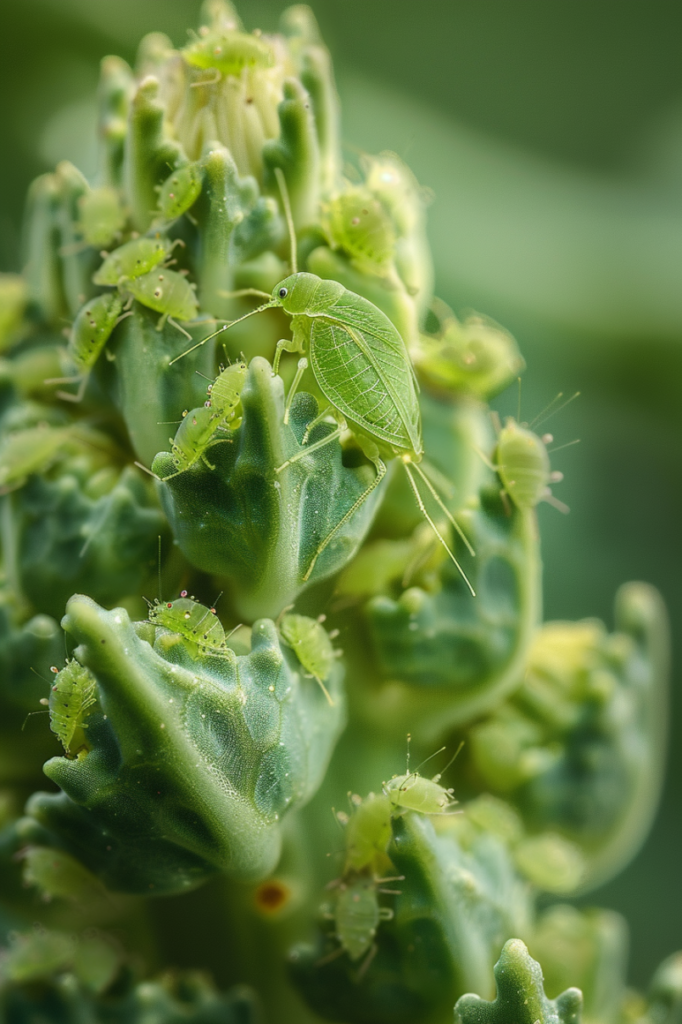
Common Types of Aphids That Affect Broccoli
Aphids come in various types, each with its own distinct characteristics and preferences, all of which can wreak havoc on broccoli plants.
Here are some of the most common types of aphids that target broccoli:
Cabbage aphid (Brevicoryne brassicae)
These aphids are easily recognizable by their white, waxy appearance and black thorax in winged adults.
They have a particular affinity for the youngest leaves and flowering parts of broccoli plants.
You might find them nestled deep within the heads of Brussels sprouts and cabbage, where they feast voraciously, causing significant damage.
Turnip aphid (Rhopalosiphum pseudobrassicae)
Often referred to as the false cabbage aphid, these pests sport a white, waxy coating that distinguishes them.
Despite their misleading name, turnip aphids can wreak havoc on broccoli plants as well.
They have the potential to stunt or even kill small plants and can contaminate the crop at harvest if left unchecked.
Green peach aphid (Myzus persicae)
These aphids exhibit a greenish-gray hue and are adorned with a white, waxy coating.
Similar to cabbage aphids, they prefer to target the youngest leaves and flowering parts of broccoli plants.
You’ll often find them nestled deep within the heads of Brussels sprouts and cabbage, where they can cause considerable damage if left unaddressed.
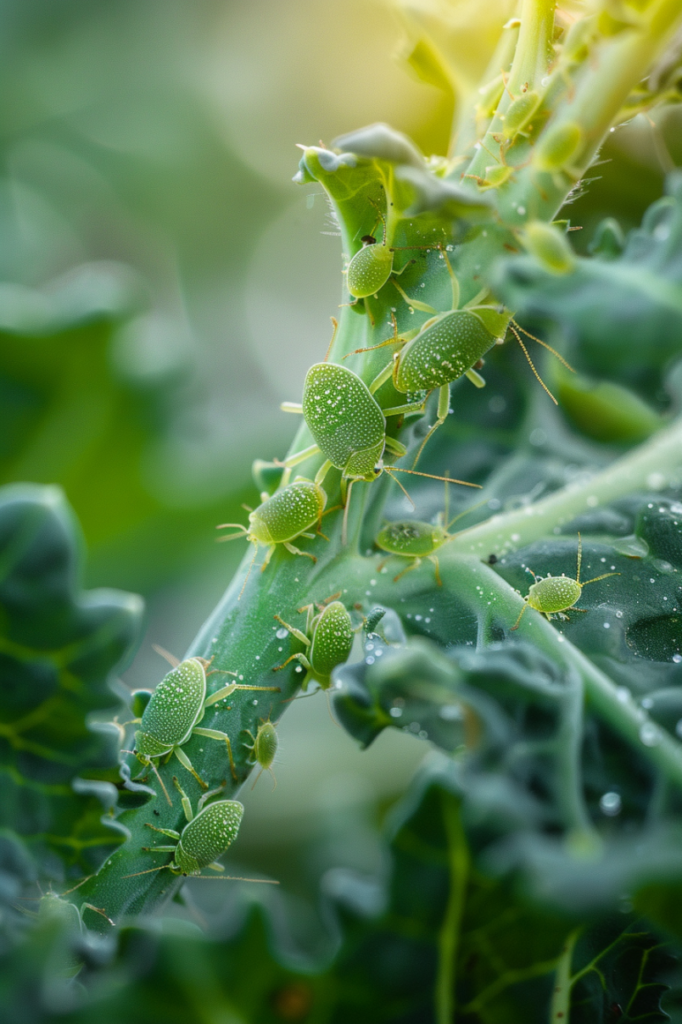
Non-Chemical Control Methods
When facing an aphid invasion on your broccoli plants, there are effective non-chemical methods to combat these pesky pests. Here’s a breakdown of these methods:
Water power
One simple yet effective method is to use the power of water.
Regularly spraying the affected broccoli plants with a strong stream of water can dislodge aphids from the leaves.
This mechanical action not only physically removes the aphids but also disrupts their feeding and mating activities.
Beneficial bug brigade
Nature provides its own pest control squad in the form of beneficial insects.
Introducing natural predators like ladybugs, lacewings, and parasitic wasps to your garden can help keep aphid populations in check.
These predators feed on aphids, effectively reducing their numbers without the need for chemical intervention.
Homemade sprays
For those looking for DIY solutions, homemade sprays offer a natural alternative to chemical insecticides.
Ingredients like garlic, neem oil, or insecticidal soap can be combined to create potent sprays that repel and kill aphids.
These natural ingredients disrupt aphid feeding and reproduction while being safe for beneficial insects and the environment.

Chemical Control Methods (Optional)
Chemical control methods are available for aphid management, but they should be used as a last resort due to potential harm to non-target organisms and the environment.
Some common chemical control methods include:
Organic insecticides
Organic insecticides offer a less harmful alternative to synthetic chemicals.
Examples include neem oil, pyrethrin, and spinosad.
Neem oil, derived from the neem tree, contains compounds that disrupt aphid feeding and growth, ultimately leading to their demise.
Pyrethrin, derived from chrysanthemum flowers, is a natural insecticide that quickly incapacitates aphids upon contact.
Spinosad is a microbial insecticide derived from soil bacteria and is effective against a wide range of pests, including aphids.
Synthetic insecticides
Synthetic insecticides contain chemical compounds designed to target and eliminate aphids.
Common active ingredients in synthetic insecticides include malathion, permethrin, and carbaryl.
These chemical treatments work by interfering with aphid nervous systems or disrupting their metabolic processes, leading to paralysis and death.
While synthetic insecticides can offer rapid control of aphid infestations, they pose a greater risk to non-target organisms and may have longer-lasting environmental impacts.
Prevention Tips
Preventing aphid infestations on broccoli plants can be achieved through the following methods:
Promote beneficial insects
Ladybugs, lacewings, and parasitic wasps are all natural predators of aphids.
These beneficial insects can help keep aphid populations in check.
Attract them to your garden by planting companion flowers like dill, alyssum, or nasturtiums.
You can also provide them with nesting sites by creating small brush piles or using commercially available ladybug houses.
Keep your garden clean
Aphids love to overwinter in debris and weeds.
By keeping your garden clean and free of these hiding spots, you’ll make it less hospitable for them to establish themselves.
Remove spent plants and weeds regularly, especially in the fall before winter.
Practice crop rotation
Planting broccoli in the same spot year after year can increase the risk of aphid infestations.
Rotate your crops by planting broccoli in a different location each season.
This disrupts the aphid life cycle and makes it harder for them to find your plants.
Monitor your plants regularly
Early detection is key to preventing a full-blown aphid invasion.
Regularly inspect your broccoli plants for signs of aphids, such as curled leaves, sticky residue (honeydew), or stunted growth.
Early intervention with non-chemical methods is much easier than dealing with a large infestation.
Choose strong, healthy plants
Aphids are more likely to target weak or stressed plants.
Choose healthy seedlings and provide them with the proper care, including watering, fertilization, and adequate sunlight.
Strong, healthy plants are better able to resist aphid attacks.
Row covers
If you’re dealing with persistent aphid problems, consider using row covers.
These lightweight fabric barriers can be placed over your broccoli plants to physically exclude aphids and other pests.
They are most effective when used early in the season before aphids have a chance to establish themselves.
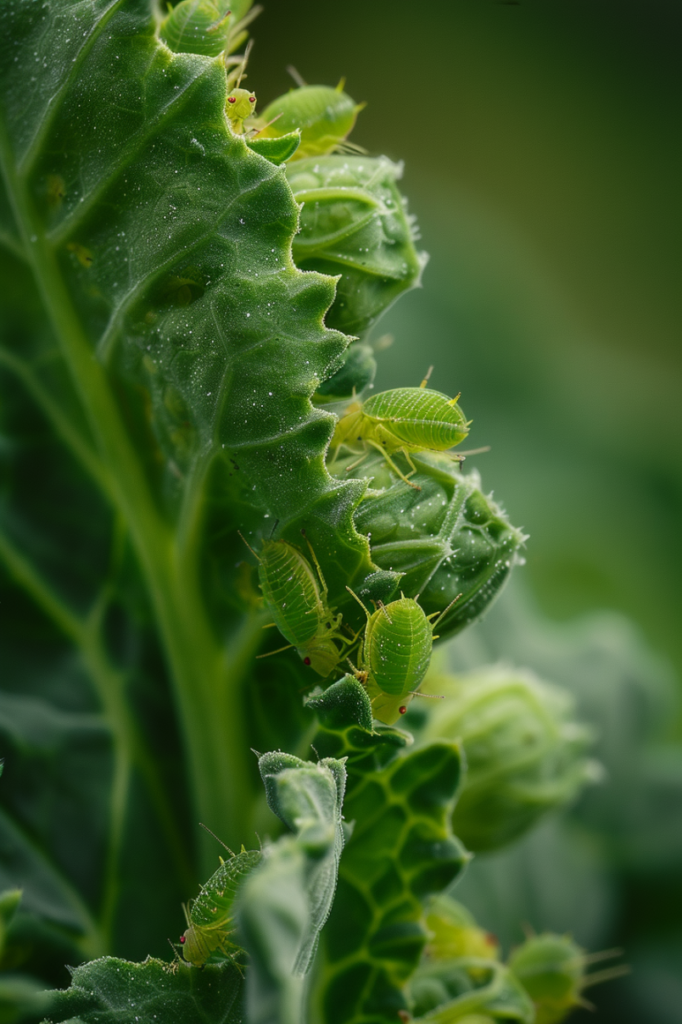
Conclusion
Controlling aphids on broccoli is essential for maintaining healthy plants and ensuring a good crop yield.
By using non-chemical control methods, such as water power, beneficial bugs, and homemade sprays, you can effectively manage aphid infestations while minimizing harm to the environment.
Chemical control methods should be used as a last resort and with caution.
Prevention tips, such as planting aphid-resistant varieties and practicing crop rotation, can help reduce the likelihood of aphid infestations.


